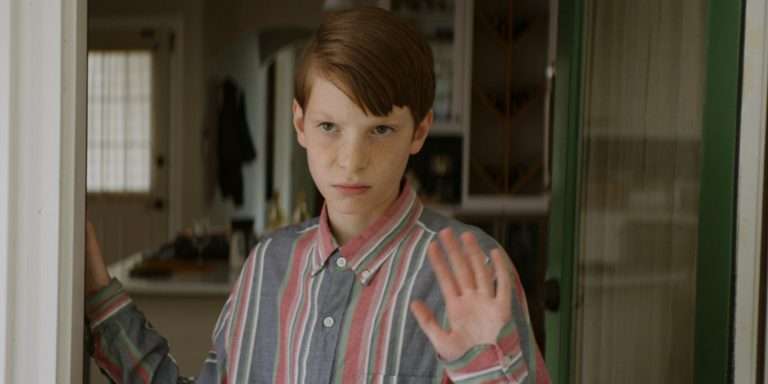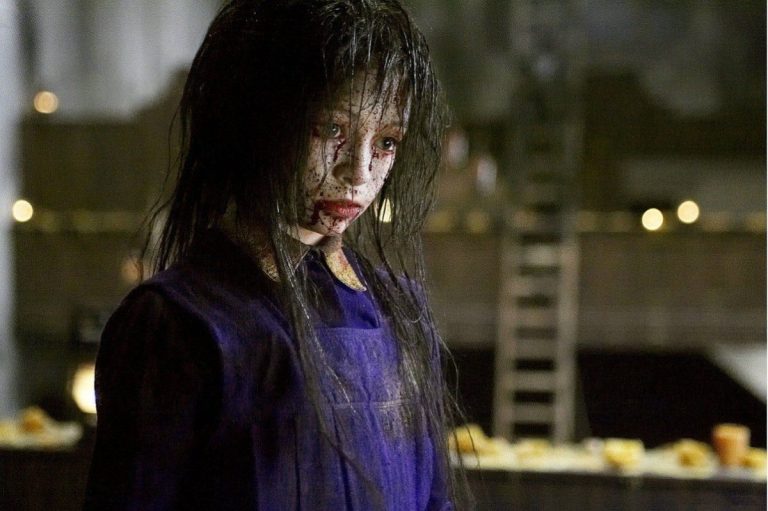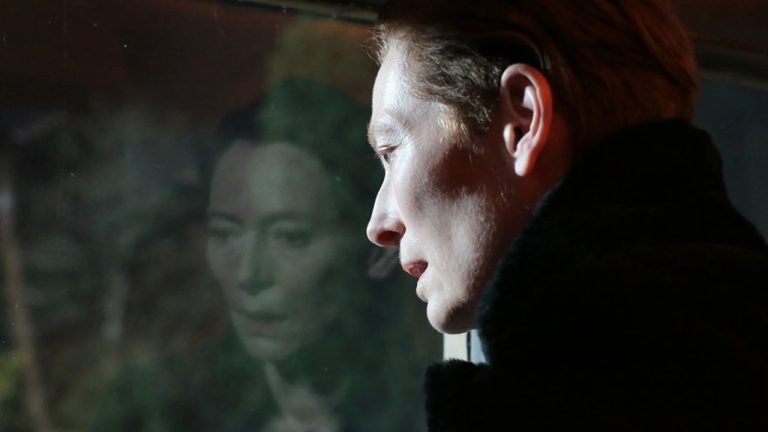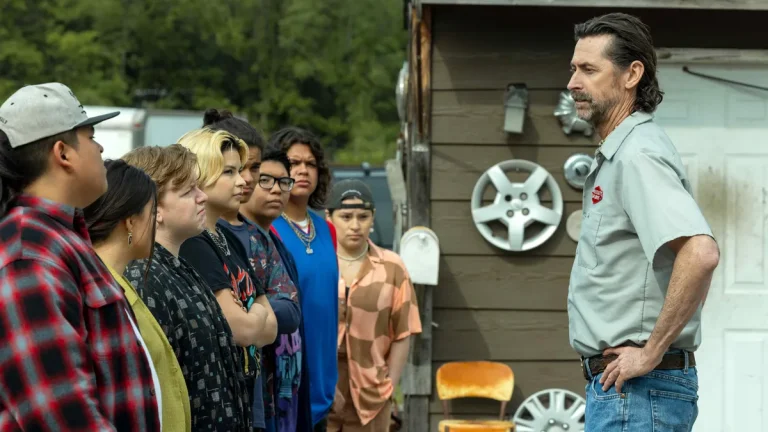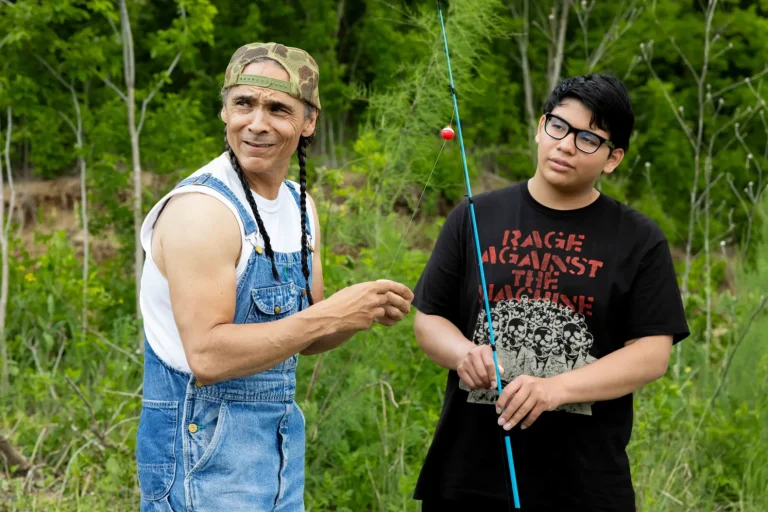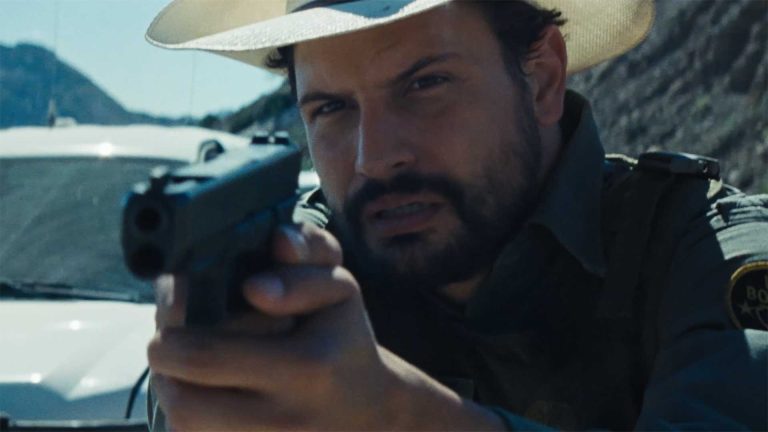“Nyad” marks the first foray into narrative filmmaking for Oscar-winning documentarians Elizabeth Chai Vasarhelyi and Jimmy Chin, who made a name for themselves with the phenomenal “Free Solo” and “The Rescue.” Given the results, perhaps they should have stuck to what they do best. Their dramatization of Diana Nyad’s improbable swim between Cuba and Florida is an uninspired, hackneyed sports biopic that exemplifies the very worst of 21st-century awards bait.
The bulk of the problem derives from the very static filmmaking techniques on display. “Nyad” is mostly a two-hander, with Annette Bening as the eponymous athlete and Jodie Foster as her trainer and best friend, Bonnie Stoll. Whilst there are other characters in the film, including curmudgeonly navigator John Bartlett (Rhys Ifans), the film primarily revolves around Nyad and Stoll’s friendship, which, given the rigid dialogue Bening and Foster are forced to deliver, never feels credibly developed.
The performances aren’t bad per se – just half-hearted and reigned in. Neither brings much charisma to their role, and both are underserved by Julia Cox’s screenplay. Perhaps the key difference between documentary and narrative filmmaking is the need for invented dialogue. In “Nyad,” conversations are functional, existing only to push the plot forward and never allowing for characterization or the construction of a distinctive tone. It is, therefore, impossible to describe the performances as anything more than serviceable, as they are not given anything compelling to work with.
Furthermore, the film’s direction similarly suffers. The way Vasarhelyi and Chin frame scenes are incredibly unnatural; shot choices are unmotivated, and the lack of spectacle in favor of functionality only reinforces the already underwhelming nature of the dialogue and performances. “Nyad” doesn’t generate verisimilitude, the creation of which is exclusive to narrative – not documentary – filmmaking. The skills necessary to produce works in these arenas, as the film evinces, are vastly different.
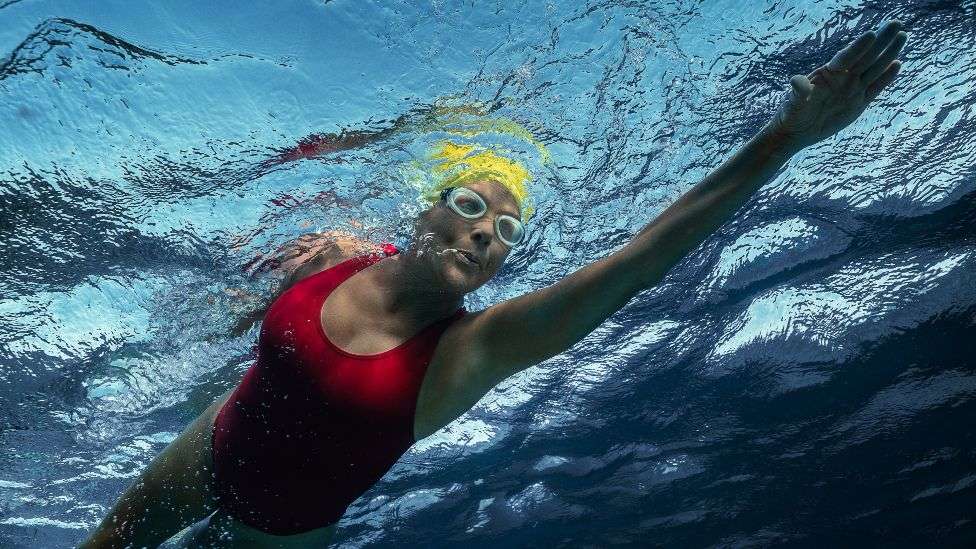
The admittedly vivid swimming sequences play to Vasarhelyi and Chin’s strengths. Even at their most comfortable, the choice they make to visually represent Diana’s hallucinations is, at best, questionable. Because of the sharp contrast between the naturalism “Nyad” unsuccessfully tries to create and these elements of magical realism, the directing pair strikes an unintentionally comedic tone. Intercuts between exposition related to Diana’s motivation to make the swim and the actual swim itself does at least provide something formally interesting. But even that creative touch feels like an afterthought that merely exists to compensate for the main narrative’s lack of characterization.
That brings us to the film’s failure as a sports biopic. When it comes to this history-based genre, we typically know where our protagonist’s journey ends. The easiest and most common way of overcoming this unfortunate sense of dramatic irony is to frame the narrative as a character study that explores what motivates the inhuman drive of athletes like Diana Nyad. Attempts are made to interrogate such ideas but are nevertheless unfocused. Primarily interested in Diana Nyad’s achievement, Vasarhelyi and Chin limit the amount of screentime committed to exploring who she is as a person or her relationship with Bonnie.
We don’t see how they function outside this primary goal, making it difficult for us to feel much when they succeed. “Nyad” is only concerned with the challenge, not the person striving to overcome it. Sports biopics that hit notes similar to this movie can still manage to inspire in the way for which the genre is known, meaning that “Nyad’s” adoption of formulaic beats isn’t the problem; it’s the film’s lack of desire to at all operate beyond them. At 120 minutes, it’s not as if “Nyad” is pressed for time.
The film drags for most of its length because the plot is grounded in goal-oriented stakes, not character-oriented ones. “Nyad” is fundamentally flawed. As a sports biopic, it lacks the genre’s essential qualities; as a character study, the movie lacks the intimate insight necessary to fully grasp the character’s psychology or motivations. We are never offered a glimpse into the aftermath of the momentous achievement. Instead, the filmmakers leave us with nothing but a recreation of archival footage, with the importance of the feat overshadowing the person behind it.
No closure is provided in regards to the central bond between Bonnie and Diana either, so it even fails as a drama about interpersonal relationships. The thematic development and character work stem from sloppy, on-the-nose dialogue; ideas are stated but not expanded upon. The editing becomes jarring as it vainly tries to establish the motivations left unexplored by the screenplay, and the narrative, through which cliched and two-dimensional characters guide us, is forgettably predictable. The major problem is not that it arrives as awards bait but that it never tries to be anything more.




